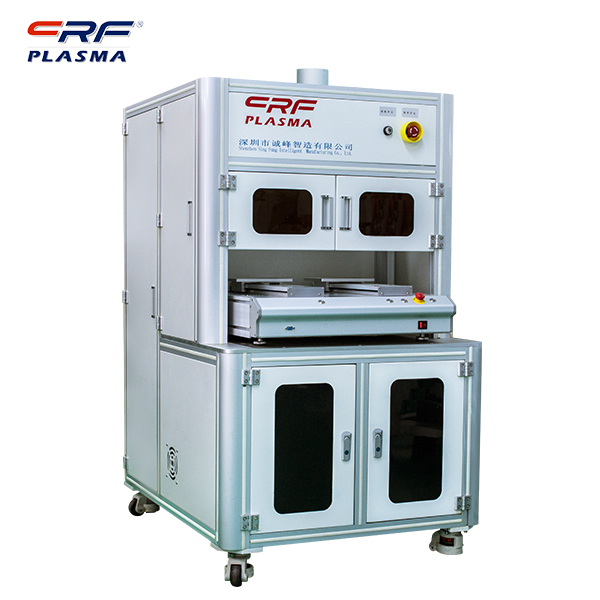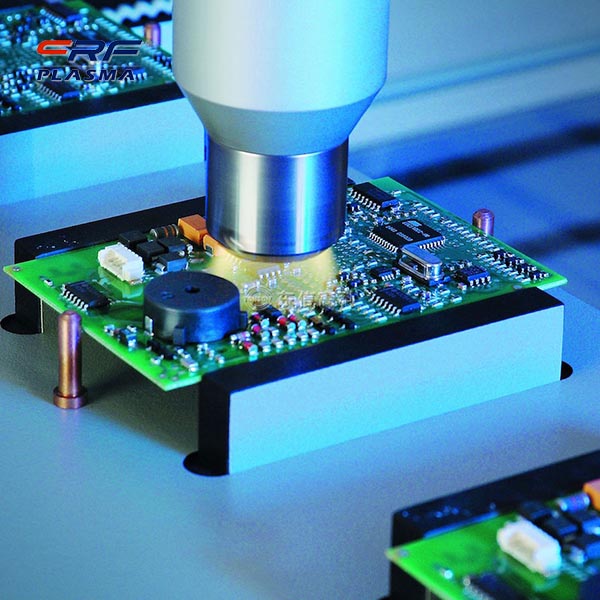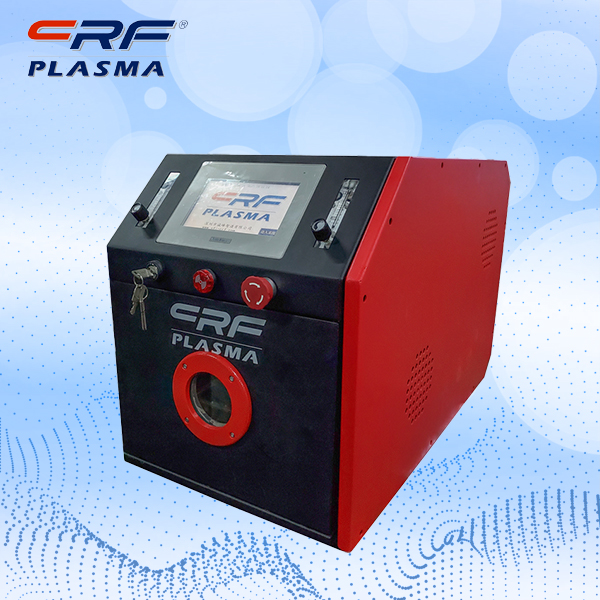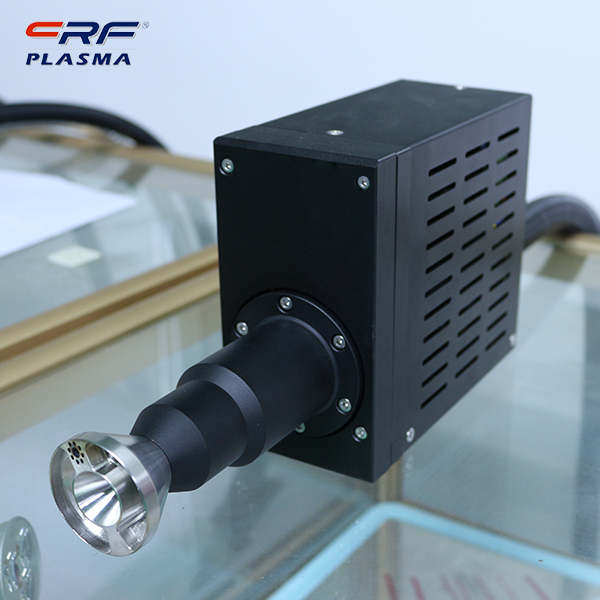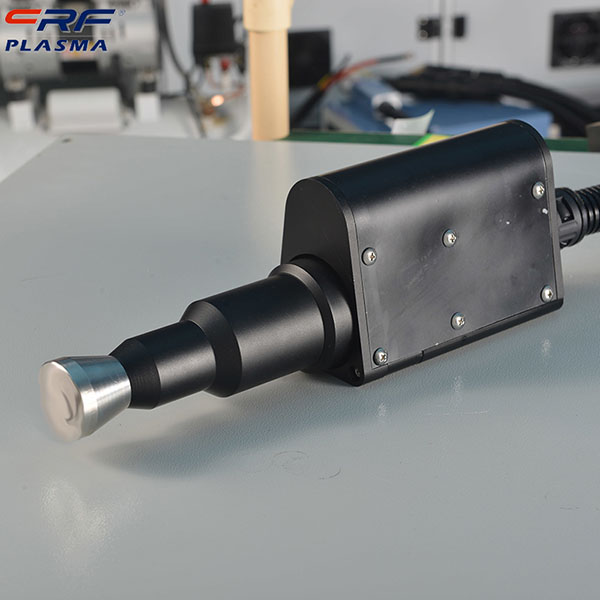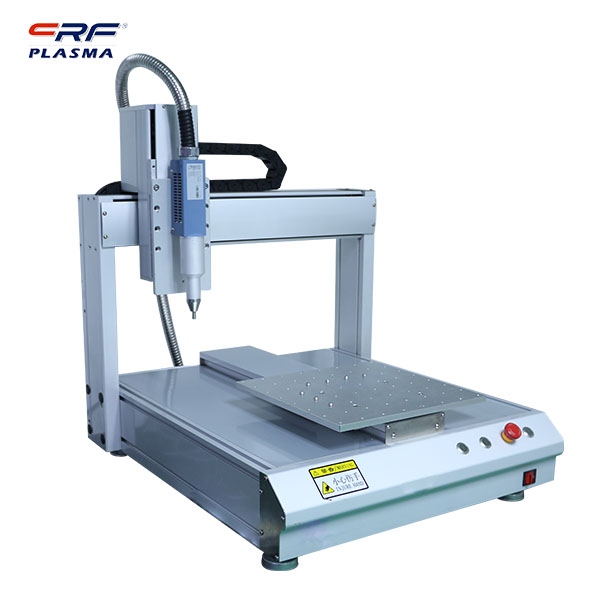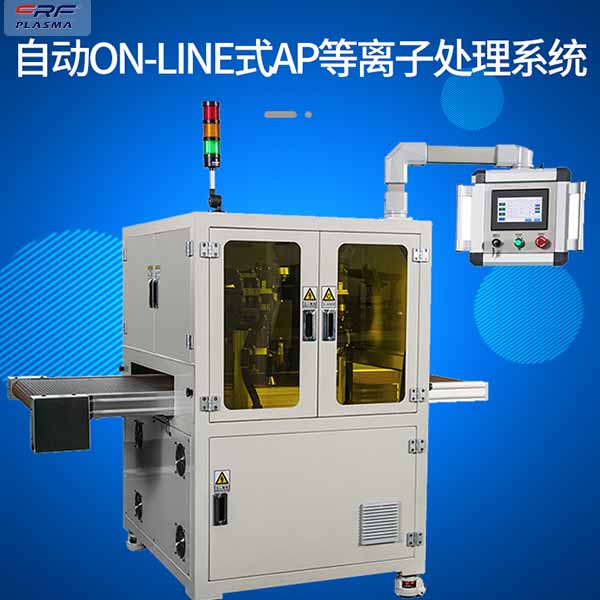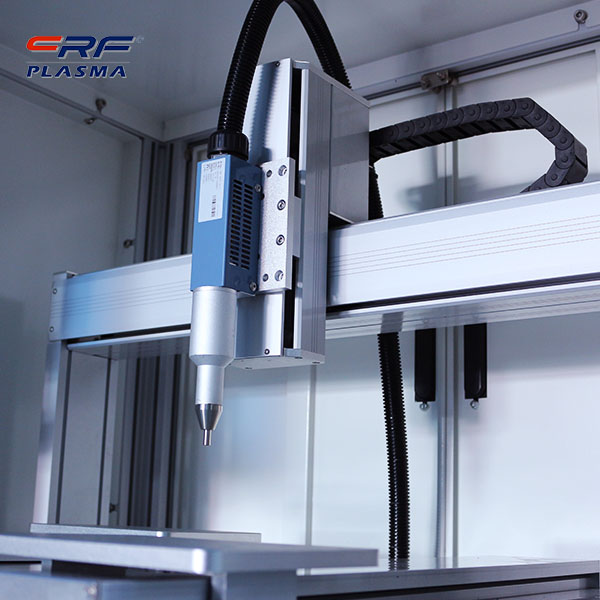
Welcome to Shenzhen Sing Fung Intelligent Manufacturing Co., Ltd.
E-mail:shaobo@sfi-crf.com
Catalytic activity of plasma supported alkaline earth metal oxide catalysts
- Categories:Industry News
- Author:Plasma cleaning machine-CRF plasma plasma equipment-plasma surface treatment machine manufacturer-chengfeng intelligent manufacturing
- Origin:
- Time of issue:2022-02-21
- Views:
(Summary description)Catalytic activity of plasma supported alkaline earth metal oxide catalysts: The research on the reaction of CO2 oxidation of CH4 to C2 hydrocarbons under the combined action of plasma plasma and carrier shows that the acidic carrier Y-Al2O3 has a high methane conversion rate (43.4%), but the C2 hydrocarbon selectivity is low (30.6%): basic carrier MgO has a low methane conversion (17.8%), but a high C2 hydrocarbon selectivity (57.4%). If MgO is loaded on Y-Al2O3, can a higher C2 hydrocarbon selectivity be obtained on the basis of maintaining a certain methane conversion rate? Wang and Ohtsuka used the catalytic activation method to study the reaction of CO2 oxidation of CH to C2 hydrocarbons. The results show that some alkaline earth metal oxides such as CaO have high catalytic activity, which can improve the C2 hydrocarbon selectivity to a certain extent. The reaction of CO2 oxidation of CH4 to C2 hydrocarbons under the action of MgO/Y-Al2O3, CaO/Y-Al2O3, SrO/Y-Al2O3 and BaO/Y-Al2O3 was investigated under plasma conditions (Table 4-2). Compared with the result of Y-Al2O3 on the carrier, the CH conversion rate was decreased, but the C2 hydrocarbon selectivity was increased by more than 40 percentage points, indicating that the catalytic activity can be improved by loading basic active components on the acidic carrier. Under certain plasma conditions, the CH4 conversion and C2 hydrocarbon yield have a certain relationship with the basicity of MgO, CaO, SrO and BaO, that is, the basicity helps to improve the CH4 conversion and C2 hydrocarbon yield. For alkaline earth metal oxides, the basicity increases with increasing atomic number, so BaO/Y-Al2O3 and plasma can work together to obtain higher C2 hydrocarbon yields. Therefore, the catalytic activity sequence of the supported alkaline earth metal oxide catalysts under plasma ion conditions is BaO/Y-Al2O3 > SrO/Y-Al2O3 > CaO/Y-Al2O3 > MgO/Y-Al2O3. The effect of alkaline earth metal oxides on the distribution of C2 hydrocarbon products shows that they have little effect on the distribution of C2 hydrocarbon products. Acetylene is the major C2 hydrocarbon product. Table 4-2 Effects of alkaline earth metal oxide catalysts on the reaction (unit: %) Catalyst Xat Xco, sc. Yc Yco Y-Al2O3 43.4 16.7 30.6 13.4 37.1 MgO/Y-Al2O3 24.0 20.2 62.9 15.1 33.9 CaO/Y-Al2O3 24.4 19.3 64.3 15.7 34.4 SrO/Y-Al2O3 24.6 19.3 66.2 16.3 34.2 BaOr/Y-Al2O3 26.4 19.4 63.3 16.7 35.6 BaO loading and catalyst calcination temperature have a certain influence on the catalytic activity of supported alkali metal oxide catalysts. When the loading varies from 5% to 20%, with the increase of BaO loading, the conversion rates of CH4 and CO2 show the same trend. Peak-to-peak variation, peak high at 10% load. The yields of C2 hydrocarbons and CO basically changed in peak shape. This shows that the increase of BaO loading within a certain range is beneficial to improve the catalytic activity, but too high loading will lead to the accumulation of BaO on the surface of Y-Al2O3, which reduces the catalytic activity of the catalyst. The calcination temperature of the catalyst has an effect on the size and surface morphology of the active particles of the catalyst, and affects the reactivity of the catalyst to a certain extent. Generally speaking, at lower calcination temperature, it is easy to obtain highly dispersed small particles, and the lattice structure is often defective; at higher calcination temperature, larger particles are obtained. In the calcination temperature range of 400~800℃, the research on the effect of calcination temperature on the catalytic activity of 10%-BaO/Y-Al2O3 shows that when the calcination temperature is 400℃, the conversion rates of CH4 and CO2 are slightly higher than other calcination temperatures, but C2 hydrocarbons The low selectivity of C2 resulted in a decrease in the yield of C2 hydrocarbons. This is because at this temperature, the Ba(NO3)2 supported on the surface of Y-Al203 is not completely decomposed, which can be confirmed by the X-ray diffraction (XRD) spectrum of the sample; when the calcination temperature is between When the temperature is between 500 and 800 °C, the catalytic activity has little effect; when the reaction temperature is higher than 800 °C, Y-Al2O3 is transformed into δ-A12O3, and the reaction activity decreases.
Catalytic activity of plasma supported alkaline earth metal oxide catalysts
(Summary description)Catalytic activity of plasma supported alkaline earth metal oxide catalysts:
The research on the reaction of CO2 oxidation of CH4 to C2 hydrocarbons under the combined action of plasma plasma and carrier shows that the acidic carrier Y-Al2O3 has a high methane conversion rate (43.4%), but the C2 hydrocarbon selectivity is low (30.6%): basic carrier MgO has a low methane conversion (17.8%), but a high C2 hydrocarbon selectivity (57.4%). If MgO is loaded on Y-Al2O3, can a higher C2 hydrocarbon selectivity be obtained on the basis of maintaining a certain methane conversion rate?
Wang and Ohtsuka used the catalytic activation method to study the reaction of CO2 oxidation of CH to C2 hydrocarbons. The results show that some alkaline earth metal oxides such as CaO have high catalytic activity, which can improve the C2 hydrocarbon selectivity to a certain extent. The reaction of CO2 oxidation of CH4 to C2 hydrocarbons under the action of MgO/Y-Al2O3, CaO/Y-Al2O3, SrO/Y-Al2O3 and BaO/Y-Al2O3 was investigated under plasma conditions (Table 4-2). Compared with the result of Y-Al2O3 on the carrier, the CH conversion rate was decreased, but the C2 hydrocarbon selectivity was increased by more than 40 percentage points, indicating that the catalytic activity can be improved by loading basic active components on the acidic carrier.
Under certain plasma conditions, the CH4 conversion and C2 hydrocarbon yield have a certain relationship with the basicity of MgO, CaO, SrO and BaO, that is, the basicity helps to improve the CH4 conversion and C2 hydrocarbon yield. For alkaline earth metal oxides, the basicity increases with increasing atomic number, so BaO/Y-Al2O3 and plasma can work together to obtain higher C2 hydrocarbon yields. Therefore, the catalytic activity sequence of the supported alkaline earth metal oxide catalysts under plasma ion conditions is BaO/Y-Al2O3 > SrO/Y-Al2O3 > CaO/Y-Al2O3 > MgO/Y-Al2O3. The effect of alkaline earth metal oxides on the distribution of C2 hydrocarbon products shows that they have little effect on the distribution of C2 hydrocarbon products. Acetylene is the major C2 hydrocarbon product.
Table 4-2 Effects of alkaline earth metal oxide catalysts on the reaction (unit: %)
Catalyst Xat Xco, sc. Yc Yco
Y-Al2O3 43.4 16.7 30.6 13.4 37.1
MgO/Y-Al2O3 24.0 20.2 62.9 15.1 33.9
CaO/Y-Al2O3 24.4 19.3 64.3 15.7 34.4
SrO/Y-Al2O3 24.6 19.3 66.2 16.3 34.2
BaOr/Y-Al2O3 26.4 19.4 63.3 16.7 35.6
BaO loading and catalyst calcination temperature have a certain influence on the catalytic activity of supported alkali metal oxide catalysts. When the loading varies from 5% to 20%, with the increase of BaO loading, the conversion rates of CH4 and CO2 show the same trend. Peak-to-peak variation, peak high at 10% load. The yields of C2 hydrocarbons and CO basically changed in peak shape. This shows that the increase of BaO loading within a certain range is beneficial to improve the catalytic activity, but too high loading will lead to the accumulation of BaO on the surface of Y-Al2O3, which reduces the catalytic activity of the catalyst. The calcination temperature of the catalyst has an effect on the size and surface morphology of the active particles of the catalyst, and affects the reactivity of the catalyst to a certain extent.
Generally speaking, at lower calcination temperature, it is easy to obtain highly dispersed small particles, and the lattice structure is often defective; at higher calcination temperature, larger particles are obtained. In the calcination temperature range of 400~800℃, the research on the effect of calcination temperature on the catalytic activity of 10%-BaO/Y-Al2O3 shows that when the calcination temperature is 400℃, the conversion rates of CH4 and CO2 are slightly higher than other calcination temperatures, but C2 hydrocarbons The low selectivity of C2 resulted in a decrease in the yield of C2 hydrocarbons. This is because at this temperature, the Ba(NO3)2 supported on the surface of Y-Al203 is not completely decomposed, which can be confirmed by the X-ray diffraction (XRD) spectrum of the sample; when the calcination temperature is between When the temperature is between 500 and 800 °C, the catalytic activity has little effect; when the reaction temperature is higher than 800 °C, Y-Al2O3 is transformed into δ-A12O3, and the reaction activity decreases.
- Categories:Industry News
- Author:Plasma cleaning machine-CRF plasma plasma equipment-plasma surface treatment machine manufacturer-chengfeng intelligent manufacturing
- Origin:
- Time of issue:2022-02-21 17:52
- Views:
Catalytic activity of plasma supported alkaline earth metal oxide catalysts:
The research on the reaction of CO2 oxidation of CH4 to C2 hydrocarbons under the combined action of plasma plasma and carrier shows that the acidic carrier Y-Al2O3 has a high methane conversion rate (43.4%), but the C2 hydrocarbon selectivity is low (30.6%): basic carrier MgO has a low methane conversion (17.8%), but a high C2 hydrocarbon selectivity (57.4%). If MgO is loaded on Y-Al2O3, can a higher C2 hydrocarbon selectivity be obtained on the basis of maintaining a certain methane conversion rate?
Wang and Ohtsuka used the catalytic activation method to study the reaction of CO2 oxidation of CH to C2 hydrocarbons. The results show that some alkaline earth metal oxides such as CaO have high catalytic activity, which can improve the C2 hydrocarbon selectivity to a certain extent. The reaction of CO2 oxidation of CH4 to C2 hydrocarbons under the action of MgO/Y-Al2O3, CaO/Y-Al2O3, SrO/Y-Al2O3 and BaO/Y-Al2O3 was investigated under plasma conditions (Table 4-2). Compared with the result of Y-Al2O3 on the carrier, the CH conversion rate was decreased, but the C2 hydrocarbon selectivity was increased by more than 40 percentage points, indicating that the catalytic activity can be improved by loading basic active components on the acidic carrier.
Under certain plasma conditions, the CH4 conversion and C2 hydrocarbon yield have a certain relationship with the basicity of MgO, CaO, SrO and BaO, that is, the basicity helps to improve the CH4 conversion and C2 hydrocarbon yield. For alkaline earth metal oxides, the basicity increases with increasing atomic number, so BaO/Y-Al2O3 and plasma can work together to obtain higher C2 hydrocarbon yields. Therefore, the catalytic activity sequence of the supported alkaline earth metal oxide catalysts under plasma ion conditions is BaO/Y-Al2O3 > SrO/Y-Al2O3 > CaO/Y-Al2O3 > MgO/Y-Al2O3. The effect of alkaline earth metal oxides on the distribution of C2 hydrocarbon products shows that they have little effect on the distribution of C2 hydrocarbon products. Acetylene is the major C2 hydrocarbon product.
Table 4-2 Effects of alkaline earth metal oxide catalysts on the reaction (unit: %)
Catalyst Xat Xco, sc. Yc Yco
Y-Al2O3 43.4 16.7 30.6 13.4 37.1
MgO/Y-Al2O3 24.0 20.2 62.9 15.1 33.9
CaO/Y-Al2O3 24.4 19.3 64.3 15.7 34.4
SrO/Y-Al2O3 24.6 19.3 66.2 16.3 34.2
BaOr/Y-Al2O3 26.4 19.4 63.3 16.7 35.6
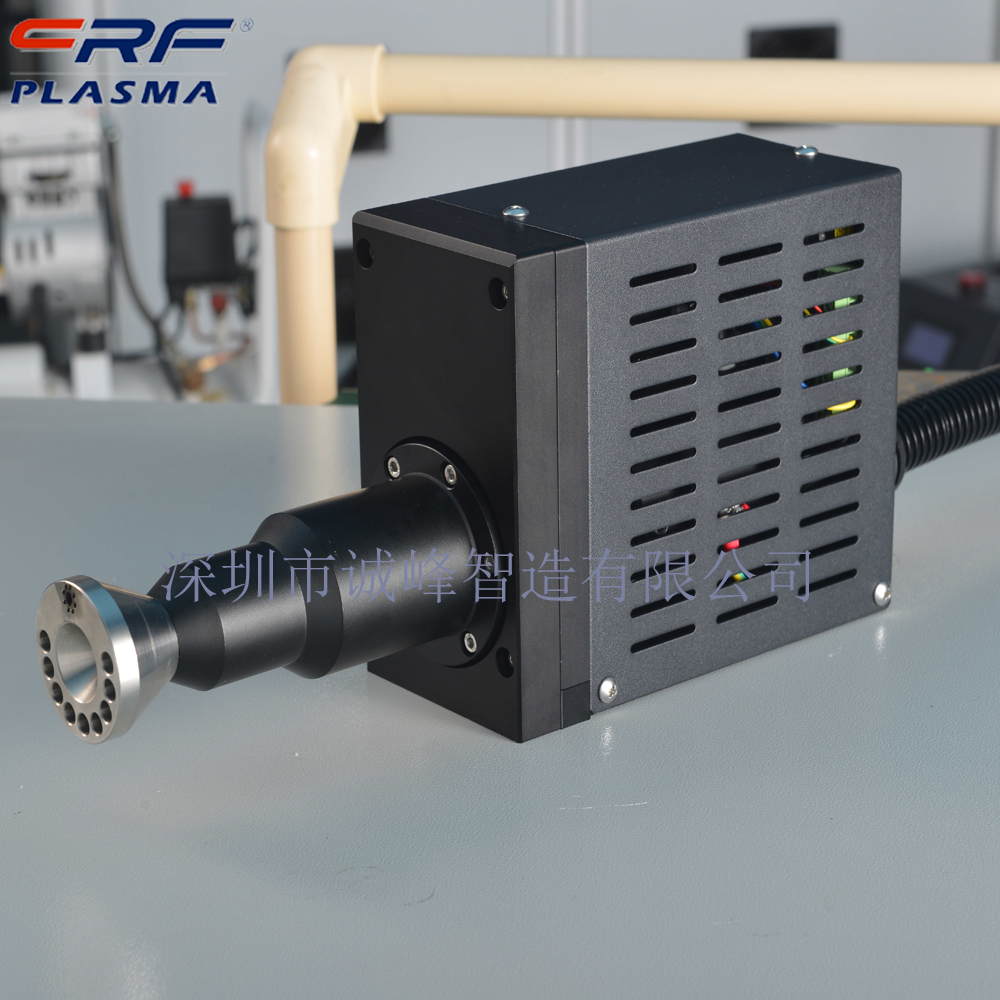 BaO loading and catalyst calcination temperature have a certain influence on the catalytic activity of supported alkali metal oxide catalysts. When the loading varies from 5% to 20%, with the increase of BaO loading, the conversion rates of CH4 and CO2 show the same trend. Peak-to-peak variation, peak high at 10% load. The yields of C2 hydrocarbons and CO basically changed in peak shape. This shows that the increase of BaO loading within a certain range is beneficial to improve the catalytic activity, but too high loading will lead to the accumulation of BaO on the surface of Y-Al2O3, which reduces the catalytic activity of the catalyst. The calcination temperature of the catalyst has an effect on the size and surface morphology of the active particles of the catalyst, and affects the reactivity of the catalyst to a certain extent.
BaO loading and catalyst calcination temperature have a certain influence on the catalytic activity of supported alkali metal oxide catalysts. When the loading varies from 5% to 20%, with the increase of BaO loading, the conversion rates of CH4 and CO2 show the same trend. Peak-to-peak variation, peak high at 10% load. The yields of C2 hydrocarbons and CO basically changed in peak shape. This shows that the increase of BaO loading within a certain range is beneficial to improve the catalytic activity, but too high loading will lead to the accumulation of BaO on the surface of Y-Al2O3, which reduces the catalytic activity of the catalyst. The calcination temperature of the catalyst has an effect on the size and surface morphology of the active particles of the catalyst, and affects the reactivity of the catalyst to a certain extent.
Generally speaking, at lower calcination temperature, it is easy to obtain highly dispersed small particles, and the lattice structure is often defective; at higher calcination temperature, larger particles are obtained. In the calcination temperature range of 400~800℃, the research on the effect of calcination temperature on the catalytic activity of 10%-BaO/Y-Al2O3 shows that when the calcination temperature is 400℃, the conversion rates of CH4 and CO2 are slightly higher than other calcination temperatures, but C2 hydrocarbons The low selectivity of C2 resulted in a decrease in the yield of C2 hydrocarbons. This is because at this temperature, the Ba(NO3)2 supported on the surface of Y-Al203 is not completely decomposed, which can be confirmed by the X-ray diffraction (XRD) spectrum of the sample; when the calcination temperature is between When the temperature is between 500 and 800 °C, the catalytic activity has little effect; when the reaction temperature is higher than 800 °C, Y-Al2O3 is transformed into δ-A12O3, and the reaction activity decreases.
Scan the QR code to read on your phone

TEL:0755-3367 3020 / 0755-3367 3019

E-mail:sales-sfi@sfi-crf.com

ADD:Mabao Industrial Zone, Huangpu, Baoan District, Shenzhen




